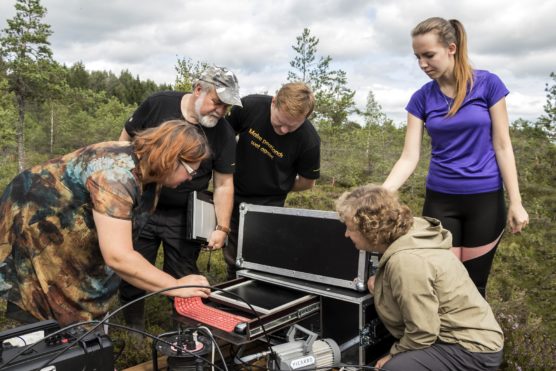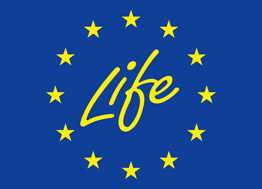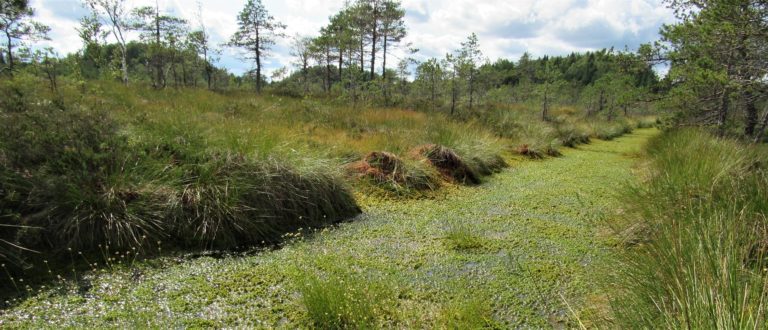In August 2018, in the Latvian project areas – Engures ezers, Baltezera purvs and Augstroze – the greenhouse gas (GHG) monitoring plots were installed and the first instrumental measurements started. GHG monitoring is necessary to measure the amount of emissions before peatland restoration in drained conditions and after blocking of ditches to assess the impact of the project actions.
During the installation of the GHG monitoring plots several experts of different fields were involved: experts from University of Latvia, Lithuanian Fund for Nature and a team from Latvia University of Life Sciences and Technologies under supervision of Inga Grīnfelde who will be responsible for regular field measurements in the Latvian and Lithuanian sites during the project lifetime. The installation of equipment was consulted by Andreas Herrmann (NABU, the coordinating project partner) and representatives from the company that supplied components of the monitoring equipment. The GHG monitoring will be carried out using similar parameters in all project countries.

For the GHG monitoring, closed-chamber measurements, using Picarro G2508 analyzer, will be applied. The equipment allows perfoming field measurements by taking the gas directly from the chamber. The chambers are placed on specially installed frames on the ground. To prevent disturbance, the monitoring sites are equipped with wooden boardwalks which help to diminish trampling effects.

In parallel, the project team will use an indirect GHG emission estimation approach –called GEST (Greenhouse Gas Emission Site Types). It means that GHG are assessed without using instrumental measurements. Instead, the emissions and the global warming potential (GWP) is calculated using vegetation mapping data – GEST vegetation forms – combined with water table data. Vegetation forms, integrating flora and environmental parameters, will be categorized as particular GEST types. GEST is a relatively new, recently developed approach which is comparatively rapid and inexpensive. Since the project areas cover vegetation types which are new for the GEST approach, the LIFE Peat Restore project will contribute to GEST-types’ catalogue by filling methodological gaps, enriching with further scientific literature and suggesting updates for emissions and GWP values (see values in Updated GEST Catalogue).
Application of both instrumental measurements and indirect GHG emission assessment approach will be essential in assessing the role and effectiveness of peatland restoration in diminshing the emissions and thus contributing to mitigation of climate change. Moreover, the project results will allow comparing application of both methods and their efficiency in assessing GHG emissions.



